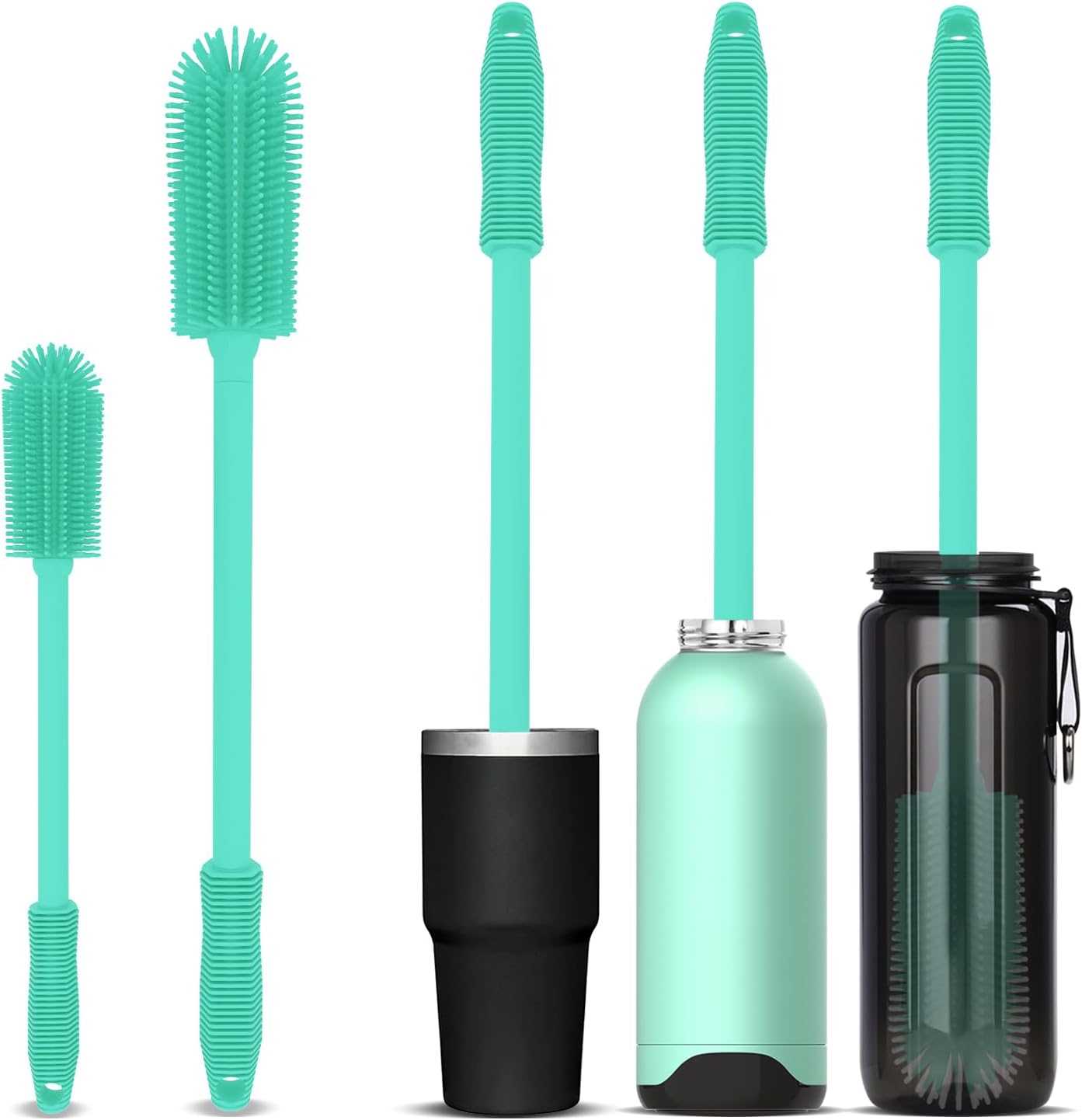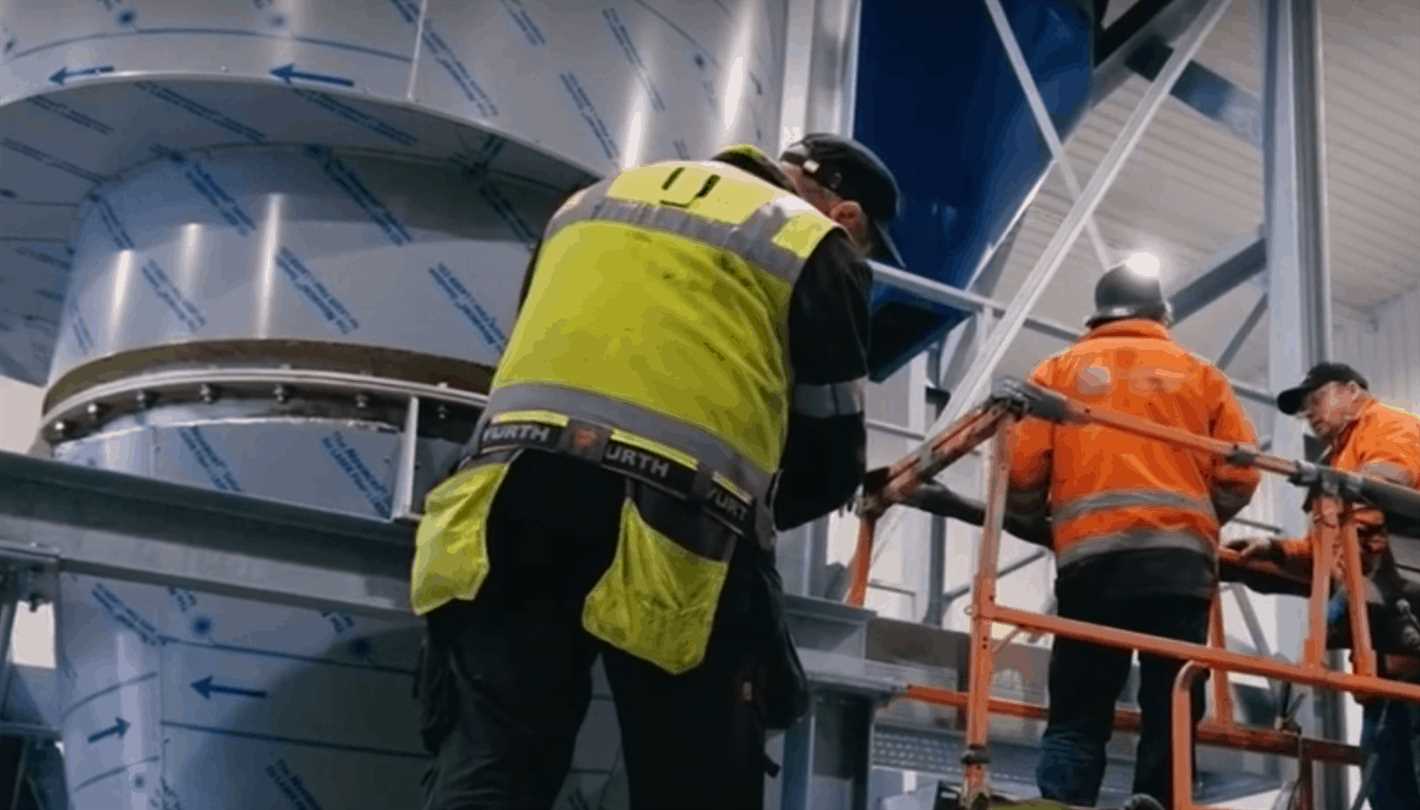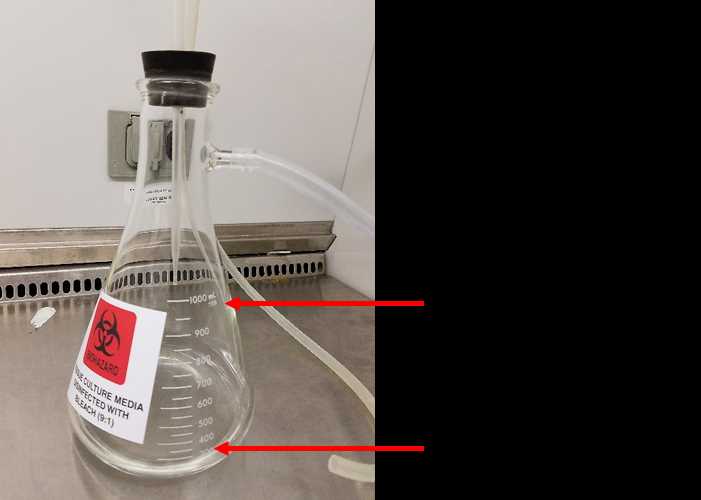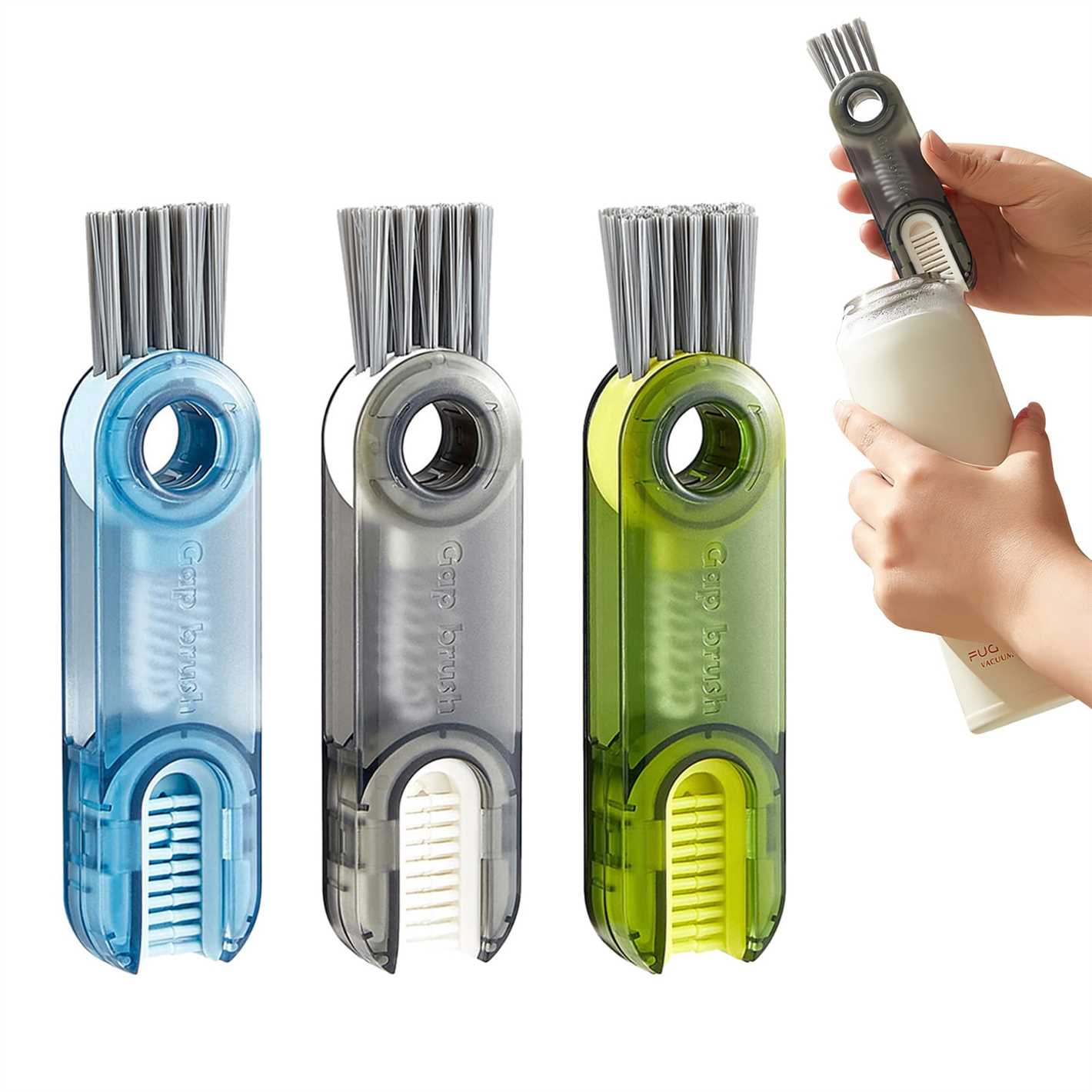- Importance of Seed Decontamination
- Advantages of Using a Thermos
- Selecting the Right Thermos
- Material
- Size
- Design
- Insulation
- Price
- Preparation Before Decontamination
- Step-by-Step Decontamination Process
- Tips for Maximizing Decontamination Efficiency
- 1. Proper Cleaning
- 2. Follow Recommended Procedures
- 3. Use High-Quality Decontamination Solutions
- 4. Adequate Soaking Time
- 5. Regularly Monitor and Test
- 6. Maintain Proper Temperature
- 7. Implement Good Hygiene Practices
- 8. Document and Review Results
- 9. Seek Expert Advice
- 10. Continuously Improve
- Common Mistakes to Avoid
- Storage and Future Use
- Proper Storage Techniques
- Future Use of Stored Seeds
- Conclusion
- Questions and Answers:
- What is seed decontamination?
- Why is seed decontamination important?
- What are some common seed decontamination techniques?
- How does hot water treatment work?
- What are the advantages of chemical seed decontamination?
- Can seed decontamination be done at home?
- Are there any natural seed decontamination methods?
- Videos: Handyman Tips & Hacks That Work Extremely Well ▶3
Seed decontamination is an essential step in maintaining the quality and health of seeds for planting. Contaminated seeds can introduce diseases, pests, and other harmful microorganisms into the soil, resulting in poor germination rates and reduced crop yields. One effective and convenient method of seed decontamination is using a thermos.
Using a thermos for seed decontamination offers several advantages. Firstly, it provides a controlled environment for the decontamination process, ensuring consistent and reliable results. Secondly, a thermos offers a compact and portable solution, making it suitable for both small-scale and large-scale seed treatments. Additionally, the heat retention properties of a thermos allow for efficient and thorough decontamination, eliminating the risk of incomplete treatment.
To decontaminate seeds in a thermos, there are several tips and techniques to follow. It is important to start with clean and dry seeds to ensure effective treatment. The thermos should also be clean and free from any contaminants. Preheating the thermos with hot water before adding the seeds can help maintain the desired temperature and improve the decontamination process.
Furthermore, varying the treatment time and temperature can target different types of contaminants. For example, higher temperatures may be effective against fungal pathogens, while lower temperatures may target bacterial contaminants. It is crucial to consult with experts or references to determine the ideal treatment conditions for specific types of seeds and contaminants.
In conclusion, using a thermos for seed decontamination is a practical and efficient method to ensure the quality and health of seeds. By following the tips and techniques mentioned above, farmers and gardeners can greatly reduce the risk of introducing harmful microorganisms and enhance the overall success of their planting endeavors.
Importance of Seed Decontamination
Seed decontamination is an essential step in ensuring the successful growth of plants. Contaminated seeds can carry diseases and pests that can severely impact the quality and yield of crops. By decontaminating seeds, farmers can reduce the risk of disease outbreaks and increase the chances of healthy plant growth.
One of the main reasons why seed decontamination is important is the prevention of plant diseases. Seeds can harbor pathogens such as bacteria, fungi, and viruses that can infect the plants and cause various diseases. These diseases can spread rapidly and result in significant crop losses. By decontaminating seeds, farmers can effectively eliminate or reduce the presence of pathogens, preventing the occurrence and spread of diseases.
Seed decontamination is also crucial for the control of pests. Insects and other pests can lay their eggs or deposit larvae on the seed surface. If these pests are not eliminated, they can infest the plants as they grow, causing damage to the crops. By decontaminating seeds, farmers can eliminate or reduce the number of pests, minimizing the risk of infestations and reducing pesticide use.
Furthermore, seed decontamination plays a vital role in seed preservation. Seeds are living organisms that have the potential to germinate and grow into plants. However, they are also susceptible to deterioration and loss of viability over time. By decontaminating seeds, farmers can create favorable conditions for seed storage and prolong their shelf life. This is particularly important for rare or endangered plant species that need to be preserved for future generations.
Overall, seed decontamination is a critical practice for farmers and gardeners to ensure the health and success of their plants. By eliminating pathogens and pests, and preserving seed viability, farmers can maximize crop productivity, reduce the use of chemical pesticides, and contribute to the sustainability of agriculture.
Advantages of Using a Thermos

Using a thermos for seed decontamination offers several advantages:
- Portability: A thermos is a compact and lightweight container that can be easily carried anywhere. It allows you to decontaminate seeds even when you are on the go, making it a convenient option for field operations or remote areas.
- Temperature Control: Thermos containers are designed to maintain the temperature of the contents. This is especially useful when decontaminating seeds, as certain pathogens and pests can be effectively killed or inhibited at specific temperatures. You can heat or cool the thermos as needed to create the ideal environment for seed treatment.
- Efficient Heat Distribution: The insulation properties of a thermos ensure that heat is evenly distributed throughout the container. This helps to ensure consistent decontamination of seeds and prevent any cold spots that may result in ineffective treatment.
- Preventive Measures: Using a thermos for seed decontamination reduces the risk of accidentally contaminating other areas or crops. The lid of a thermos provides a secure seal, preventing the escape of treated seeds or any pathogens present in the container. This containment helps to prevent the spread of disease and maintain the overall health of the agricultural ecosystem.
- Cost-effective: Thermos containers are relatively affordable and can be reused multiple times. This makes them a cost-effective option for seed decontamination, especially compared to other specialized equipment or procedures that may incur additional expenses.
- Easy to Clean: Thermos containers are typically designed for easy cleaning. They are often made from materials that are resistant to stains and odors, making it simple to remove any residue from the decontamination process.
Overall, using a thermos provides a practical and efficient way to decontaminate seeds, offering portability, temperature control, efficient heat distribution, preventive measures, cost-effectiveness, and easy cleaning.
Selecting the Right Thermos
When it comes to seed decontamination, choosing the right thermos is essential. Here are a few factors to consider when making your selection:
Material

The material of the thermos is important as it will affect its durability and ability to retain heat. Stainless steel thermoses are a popular choice due to their strength and ability to maintain temperature for extended periods. Glass thermoses are also an option, but they can be more fragile and prone to breaking.
Size
Consider the size of the thermos based on the amount of seeds you need to decontaminate. A larger thermos will allow you to decontaminate more seeds at once, but it may also be heavier and bulkier. On the other hand, a smaller thermos may be more portable but can limit the number of seeds you can decontaminate at once.
Design
Look for a thermos with a wide mouth opening, as this will make it easier to fill with seeds and clean afterward. Additionally, consider a thermos with a secure lid to prevent any leaks or spills during the decontamination process.
Insulation
If you plan to use the thermos for seed decontamination over an extended period, insulation is an important factor to consider. Thermoses with double-walled insulation can help retain heat for longer, ensuring that the decontamination process is effective.
Price
Finally, consider your budget when selecting a thermos. Prices can vary depending on the brand, material, and features of the thermos. Determine your needs and priorities to find the right thermos that fits within your budget.
Preparation Before Decontamination
Before beginning the decontamination process, it is important to ensure that you have all the necessary materials and tools ready. Follow these steps to properly prepare for seed decontamination:
- Collect all the seeds: Gather the seeds that you plan to decontaminate and place them in a clean container. Make sure to handle the seeds with clean hands or wear gloves to prevent introducing new contaminants.
- Clean the thermos: Ensure that the thermos you will be using for decontamination is thoroughly cleaned and free of any previous residues. Wash it with soap and water and rinse it well before use. Avoid using any harsh chemicals or cleaners that may leave behind residue or affect the seeds.
- Prepare the decontamination solution: Depending on the type of decontamination desired, prepare the appropriate solution. This may involve mixing a specific ratio of disinfectant or sterilizing agent with water. Follow the manufacturer’s instructions or established protocols for the decontamination solution.
- Assemble necessary tools: Make sure you have all the required tools for the decontamination process, such as a measuring cup, thermometer, stirrer, and any other equipment specific to your chosen decontamination method.
- Create a work area: Set up a clean and organized work area where you can perform the decontamination process. This may involve laying out clean paper towels, disposable gloves, or other materials that can help maintain cleanliness and prevent cross-contamination.
- Establish proper labeling: Label each container or bag of seeds with necessary information, such as the date, seed type, and any other relevant details. This will help you keep track of the decontamination process and identify the seeds easily afterwards.
By following these preparation steps, you can ensure that your seed decontamination process will be effective and efficient, reducing the risk of contaminating your seeds and increasing the chances of successful germination.
Step-by-Step Decontamination Process
When decontaminating seeds in a thermos, it is important to follow a systematic process to ensure effective results. Here is a step-by-step guide on how to decontaminate seeds using a thermos:
- Gather the necessary materials: Before starting the decontamination process, make sure you have all the materials required. This includes a thermos, disinfectant solution, clean water, a timer, and the seeds that need to be decontaminated.
- Prepare the disinfectant solution: Mix the disinfectant solution according to the instructions provided by the manufacturer. Ensure that the concentration of the solution is appropriate for seed decontamination.
- Place the seeds in the thermos: Carefully place the seeds that need to be decontaminated inside the thermos. Ensure that the thermos is clean and dry before adding the seeds.
- Add the disinfectant solution: Pour the prepared disinfectant solution into the thermos, ensuring that all the seeds are fully submerged. The volume of the solution should be sufficient to cover the seeds completely.
- Set the timer: Set a timer to keep track of the decontamination time. The required time will vary depending on the type of seeds and the disinfectant solution used. Refer to the seed decontamination guidelines or consult an expert for the appropriate timing.
- Seal the thermos: Close the thermos tightly to prevent any leakage and to maintain the temperature during the decontamination process. This will help create a controlled environment for effective decontamination.
- Allow the seeds to soak: Let the seeds soak in the disinfectant solution for the specified amount of time. Avoid opening the thermos during this process to avoid contamination.
- Drain and rinse the seeds: After the decontamination time is complete, carefully drain the disinfectant solution from the thermos. Rinse the seeds thoroughly with clean water to remove any remaining disinfectant residue.
- Dry the seeds: Transfer the rinsed seeds to a clean and dry surface, such as a paper towel or tray. Allow the seeds to air dry completely before storing or using them for planting.
- Dispose of the disinfectant solution: Follow the appropriate guidelines for disposing of the used disinfectant solution. Avoid pouring it down the drain or disposing of it in the environment without proper treatment.
By following these step-by-step instructions, you can effectively decontaminate seeds using a thermos, ensuring that they are ready for successful germination and planting.
Tips for Maximizing Decontamination Efficiency
Ensuring effective decontamination of seeds is crucial for maintaining the quality and viability of the crop. Here are some tips to maximize the efficiency of seed decontamination:
1. Proper Cleaning
Before starting the decontamination process, make sure to thoroughly clean all the equipment and tools to remove any residue or contaminants from previous use. This will help prevent cross-contamination and ensure better decontamination results.
2. Follow Recommended Procedures
Each type of seed decontamination method has its own set of recommended procedures and best practices. It’s important to carefully follow these guidelines to achieve optimal decontamination efficiency. This includes using the correct concentration of decontamination solution, following the specified contact time, and adhering to any other instructions provided.
3. Use High-Quality Decontamination Solutions
Invest in high-quality decontamination solutions that are specifically formulated for seed decontamination. These solutions are designed to eliminate a wide range of pathogens effectively while maintaining the viability of the seeds. Using subpar or expired decontamination solutions may result in incomplete decontamination or damage to the seeds.
4. Adequate Soaking Time

Ensure that the seeds are soaked in the decontamination solution for the recommended amount of time. Inadequate soaking time may not effectively eliminate pathogens, while excessive soaking time may lead to seed damage or reduced viability. Follow the recommended soaking time for optimal decontamination results.
5. Regularly Monitor and Test

Throughout the decontamination process, it’s important to regularly monitor and test the effectiveness of the decontamination method. Conducting periodic tests, such as agar plating or PCR analysis, will help ensure that the decontamination process is effectively eliminating pathogens and maintaining seed viability.
6. Maintain Proper Temperature
Depending on the decontamination method being used, maintaining the appropriate temperature is crucial. Improper temperature control can hamper the effectiveness of the decontamination process. Ensure that the seeds are kept at the specified temperature for the recommended duration.
7. Implement Good Hygiene Practices
Promote good hygiene practices during the decontamination process to prevent the introduction of contaminants. This includes using clean gloves, sterilized equipment, and working in a clean environment. Minimizing the chance of introducing additional pathogens or contaminants will help maximize decontamination efficiency.
8. Document and Review Results
Keep detailed records of the decontamination process, including the method used, concentrations, contact time, and any observations. This documentation will allow for better analysis and troubleshooting if any issues arise. Regularly review the results to identify any patterns or areas for improvement.
9. Seek Expert Advice
If you’re unsure about any aspect of the seed decontamination process or encountering difficulties in achieving efficient decontamination, seek advice from experts in the field. They can provide guidance, troubleshoot issues, and suggest improvements based on their experience and knowledge.
10. Continuously Improve
Seed decontamination is an ongoing process, and there is always room for improvement. Stay updated on the latest research and advancements in seed decontamination techniques. Continuously evaluate and refine your decontamination methods to maximize efficiency and ensure the highest quality and viability of your seeds.
Common Mistakes to Avoid

When it comes to seed decontamination in a thermos, there are several common mistakes that should be avoided to ensure effective and safe results. Here are some key points to keep in mind:
- Not following the proper decontamination process: It’s crucial to carefully follow the recommended decontamination process for seeds. Skipping or altering steps can compromise the effectiveness of the treatment.
- Using contaminated water: One of the most common mistakes is using water that is not free from contaminants. Always use clean, sterilized water to ensure proper seed decontamination.
- Overloading the thermos: Overfilling the thermos with seeds can hinder their exposure to the decontamination treatment. It’s essential to properly gauge the amount of seeds to ensure adequate contact with the decontamination solution.
- Improper temperature control: Maintaining the correct temperature during the decontamination process is crucial. Failing to do so can result in inadequate sterilization of the seeds. Use a thermometer to monitor and adjust the temperature as needed.
- Not sealing the thermos properly: A tightly sealed thermos is necessary to avoid contamination during the decontamination process. Double-check the lid and make sure it is securely fastened to prevent any leaks.
- Ignoring safety precautions: It’s crucial to wear gloves and other required personal protective equipment (PPE) when handling decontamination solutions. Additionally, always work in a well-ventilated area to minimize the risk of exposure to potentially harmful substances.
- Not cleaning the thermos after use: Properly cleaning the thermos after each use is essential to prevent cross-contamination. Thoroughly wash and sterilize the thermos to ensure it is ready for the next decontamination process.
By avoiding these common mistakes and following the recommended guidelines, you can enhance the effectiveness of seed decontamination in a thermos and ensure the safety of the treated seeds.
Storage and Future Use

Once the seeds have been decontaminated and are ready for storage, it is important to store them properly to maintain their viability for future use.
Proper Storage Techniques
- Keep seeds in a cool and dry environment, away from direct sunlight.
- Store seeds in airtight containers to protect them from moisture and insects.
- Label containers with the seed type, date of storage, and any additional relevant information.
- Ensure the storage area is free from pests or any other potential contaminants that could compromise the quality of the seeds.
- Check stored seeds periodically for signs of damage or decay and remove any affected seeds immediately.
- Consider using silica gel or other desiccants to help control moisture levels in the storage containers.
Future Use of Stored Seeds
Properly stored seeds can be used for future planting or breeding purposes. Here are some tips for using stored seeds:
- Before using stored seeds, perform a germination test to determine their viability.
- Follow proper seed sowing guidelines for optimal results.
- Consider using stored seeds for breeding experiments to create new varieties.
- Share stored seeds with other gardeners or organizations that may benefit from their use.
Conclusion
By following proper storage techniques and utilizing stored seeds effectively, you can ensure the long-term viability and usefulness of your preserved seeds. This allows for the continued exploration and cultivation of various plant species, contributing to the preservation of biodiversity.
Questions and Answers:
What is seed decontamination?
Seed decontamination is a process of removing any pathogens or microorganisms present on the surface of seeds to ensure healthy and disease-free plant growth.
Why is seed decontamination important?
Seed decontamination is important because it helps prevent the spread of diseases and pathogens from one plant to another. It also improves the chances of successful germination and healthy plant growth.
What are some common seed decontamination techniques?
Some common seed decontamination techniques include hot water treatment, chemical treatment, and heat treatment. Each method has its own advantages and disadvantages.
How does hot water treatment work?
Hot water treatment involves immersing seeds in hot water at a specific temperature and duration to kill any pathogens present on the seed surface. It is effective for certain types of seeds, but may not be suitable for all seed varieties.
What are the advantages of chemical seed decontamination?
Chemical seed decontamination can effectively kill a wide range of pathogens and microorganisms. It is relatively fast and easy to apply, but caution must be taken to avoid any harm to the seeds or environment.
Can seed decontamination be done at home?
Yes, seed decontamination can be done at home using simple equipment and techniques. However, it is recommended to follow proper guidelines and instructions to ensure effective decontamination and avoid any damage to the seeds.
Are there any natural seed decontamination methods?
Yes, there are some natural seed decontamination methods that involve using organic substances or biological agents to control pathogens. These methods are often used in organic farming or for those who prefer natural alternatives.







